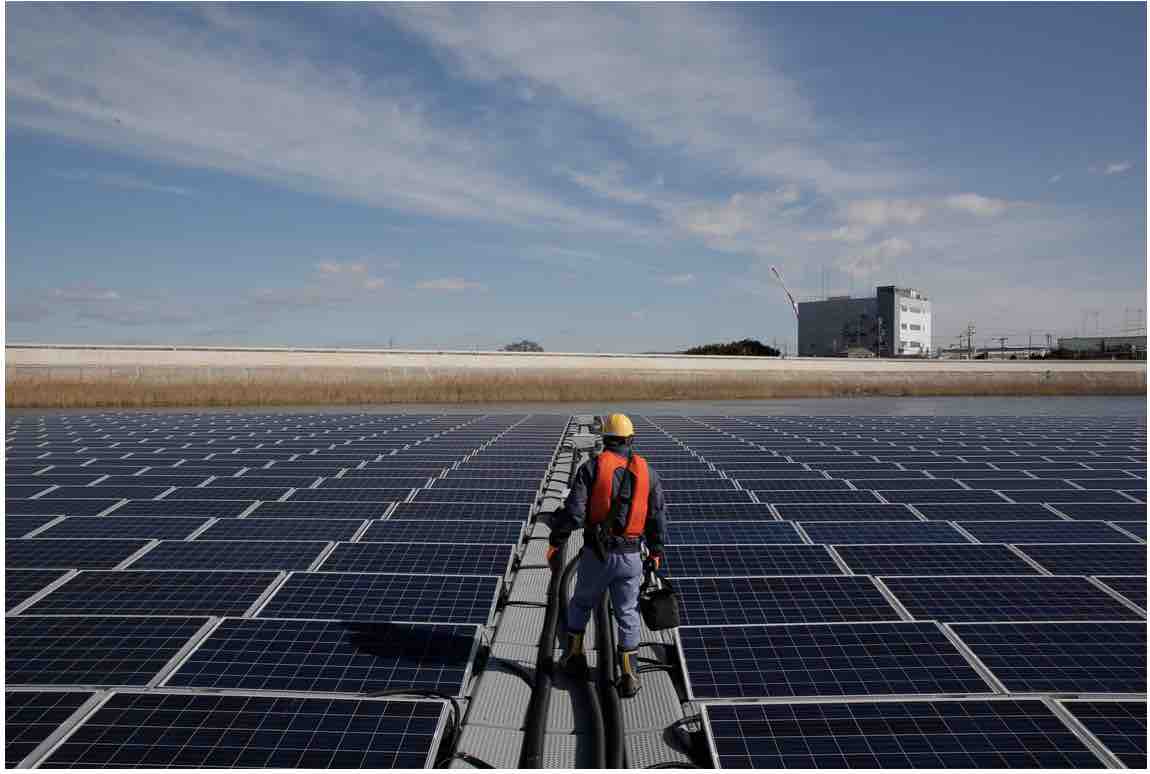Japan’s Cabinet last week adopted an energy White Paper which highlighted the “urgent” need to reduce carbon emissions in its electricity sector and which reiterated the country’s goal of increasing renewable energy to account for 22-24% of its power supply.
The annual publication of the country’s energy policy outlines the status of energy trends and the measures taken in regard to the country’s energy supply and demand through the previous years.
This year’s policy paper introduced sections on the progress of clean-up at the site of the Fukushima Daiichi nuclear disaster; efforts to cope with, and strengthen resilience to, such natural disasters; and a section dedicated to Japan’s energy policy actions to counteract global warming, based on the Paris Agreement.
That latter section details the “urgent challenge” of promoting a non-fossil and low-carbon power supply for Japan’s energy sector.
The energy White Paper confirmed its intention to increase the amount of power from non-fossil fuel-based power to 44% by 2030 – up from 19 per cent as of the end of 2017.
However, despite the Fukushima Daiichi nuclear disaster in 2011 – which halted nuclear production across the country and dramatically reduced public confidence in nuclear power – Japan’s Government is looking to make up half of that non-fossil fuel-based power from nuclear energy.
Fossil fuel-fired generation increased significantly after the nuclear disaster, making up the gap caused by so many nuclear plants halting production, but Japan is desperate to decrease the country’s reliance on fossil fuels.
However, Japan’s utilities are not as confident in the role nuclear will play. Restarting nuclear plants has gone slowly since many were shuttered so as to adhere to stricter safety standards, while nearly half of the country’s 54 nuclear reactors have been designated for decommissioning. Only nine reactors have resumed operations since the 2011 nuclear disaster.
Japan’s renewable energy target of 22-24 per cent is on the lower end of ambition, as it increases the country’s renewable energy share from only 16 per cent currently.
Andrew DeWit, a professor at Rikkyo University, Tokyo, who specialises in renewable energy policies, told Al Jazeerathat “Those energy targets are, if anything, less ambitious than they could be.
“One of the criticisms has been that they are only aiming for 22-2 per cent on renewables and therefore they are not going to devote much in the way of policy supports. Well, that’s just nonsense, because if you look at their budgets and integrated planning, they are focused on diffusing cost-effective renewables as fast as possible.”
Renewable energy ambition in Japan, then, is coming from the energy sector itself which is particular interested in becoming an offshore wind energy leader.
Tomoaki Kobayakawa, President of the Tokyo Electric Power Company (TEPCO) – owners of the ill-fated Fukushima Daiichi Nuclear Power Plant – in July 2018 outlined his plans to not only develop 6 to 7 GW of renewable energy across Japan and overseas, but promised to focus particularly on offshore wind – and in particular, floatingoffshore wind.
TEPCO began putting their President’s goals into action in January of this year, when the company signed a Memorandum of Understanding (MoU) with Danish power giant Ørsted which will see the two companies work together on developing offshore wind projects – starting with the Choshi offshore wind project near Tokyo, for which TEPCO has already been carrying out a seabed survey.
“TEPCO is aiming to make renewable energy a core generating source by developing 6-7 GW of renewable energy projects in Japan and overseas,” said TEPCO Representative Executive Officer and President, Tomoaki Kobayakawa in January. “The partnership with Ørsted will provide us with a very strong platform to scale up our renewable energy business as one of our main pillars of business growth.”
“Rising costs and a lack of public confidence in TEPCO’s ability as a nuclear operator has led the company to reconsider its future strategy,” said Robert Liew of Wood Mackenzie Power & Renewables, speaking in February. “TEPCO’s involvement in offshore wind is a crucial development which signalled to the market that offshore wind is commercially viable. This will make it easier for the government and local companies to accept offshore wind.”
“The medium- to long-term outlook for offshore wind in Japan looks especially promising with TEPCO’s involvement in offshore wind, the growing offshore pipeline and new policy measures to support wind development. We expect Japan to emerge as a key offshore wind market in Asia.”
Japan’s Electric Power Development Co., better known as J-Power, has similarly made moves towards developing offshore wind and floating offshore wind. In September 2018, H-Power signed a Memorandum of Understanding (MoU) with French multinational electric utility ENGIE to collaborate on offshore wind power projects.










